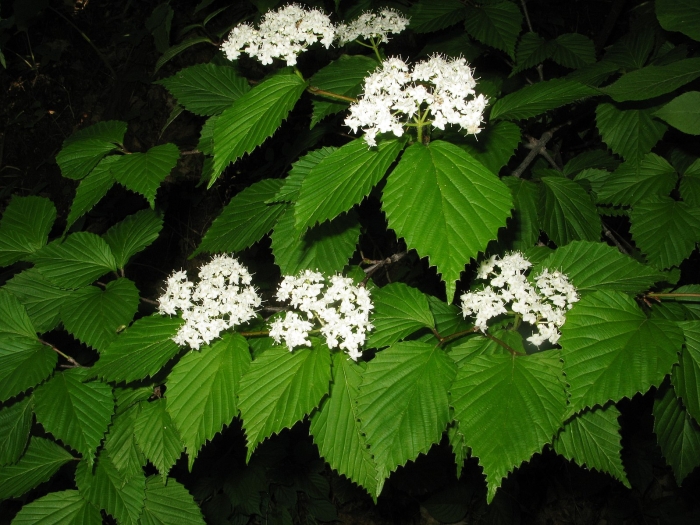Wright’s Viburnum
(Viburnum wrightii)
Wright’s Viburnum (Viburnum wrightii)
/
/

Qwert1234
CC BY-SA 3.0












Estimated Native Range
Summary
Wright’s Viburnum is valued for its versatility in the landscape, serving as a specimen plant, in shrub borders, or as part of a mixed hedge. It is also used for naturalizing in woodland gardens. This shrub is relatively low-maintenance, requiring medium amounts of water and thriving in a variety of soil types, though it prefers well-drained soils. It is adaptable to full sun or part shade conditions. While generally pest and disease resistant, it can occasionally suffer from viburnum leaf beetle infestations. Gardeners should be aware of this potential issue and monitor for signs of damage.CC BY-SA 4.0
Plant Description
- Plant Type: Shrub
- Height: 6-10 feet
- Width: 4-8 feet
- Growth Rate: Slow
- Flower Color: White
- Flowering Season: Spring
- Leaf Retention: Semi-deciduous
Growth Requirements
- Sun: Full Sun, Part Shade
- Water: Medium
- Drainage: Slow, Medium, Fast
Common Uses
Bee Garden, Bird Garden, Border Plant, Butterfly Garden, Deer Resistant, Edible*Disclaimer: Easyscape's listed plant edibility is for informational use. Always verify the safety and proper identification of any plant before consumption., Fragrant, Hedges, Hummingbird Garden, Low Maintenance, Rabbit Resistant
Natural Habitat
native to woodland margins, forest clearings, and along streams in the Russian Far East, Japan and Korea
Other Names
Common Names: Leatherleaf, Wright Viburnum, 산가막살나무
Scientific Names: , Viburnum wrightii, Viburnum wrightii var. stipellatum, Viburnum wrightii f. eglandulosum, Viburnum wrightii f. kaiense, Viburnum wrightii var. hessei, Viburnum wrightii var. lucidum, Viburnum wrightii var. minus, Viburnum wrightii var. sylvestre, Viburnum hessei
GBIF Accepted Name: Viburnum wrightii Miq.